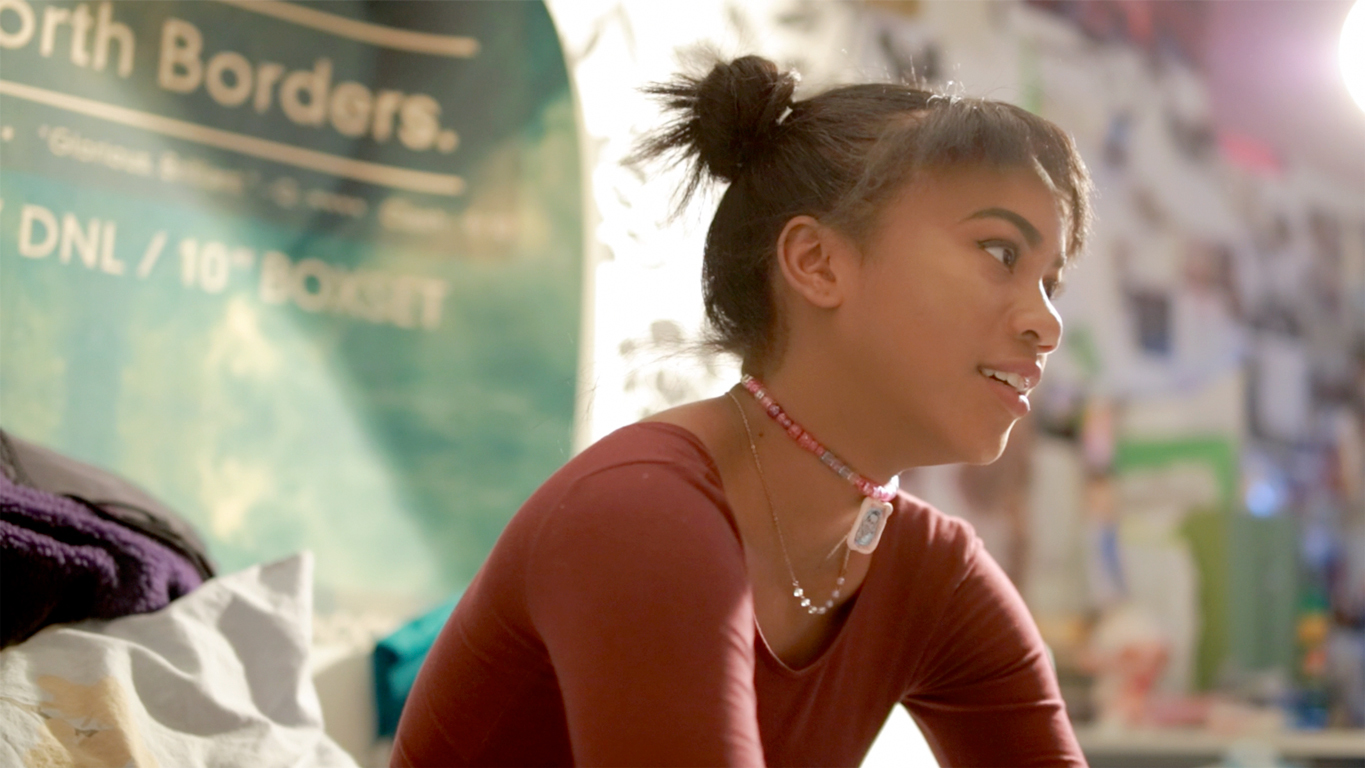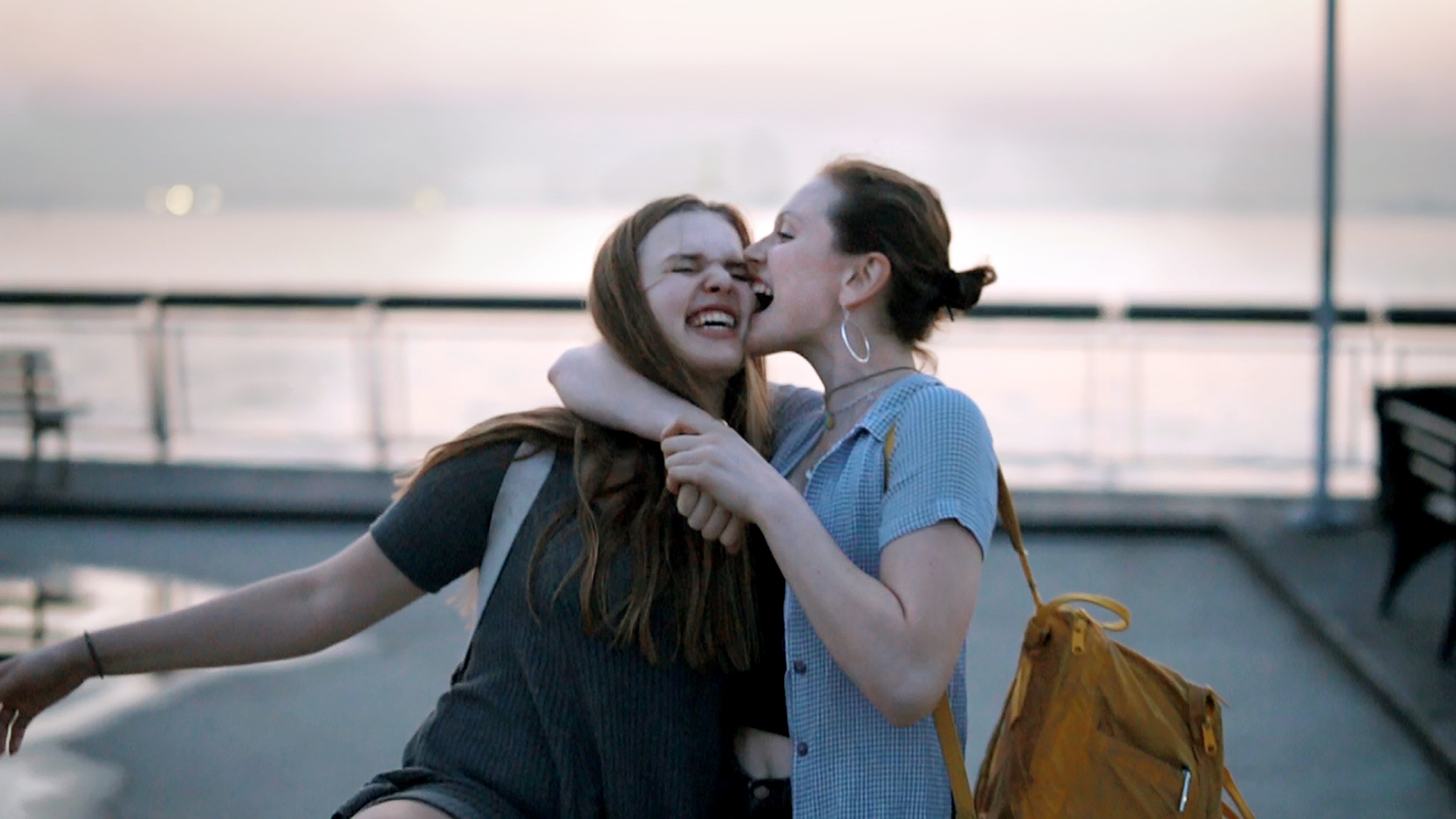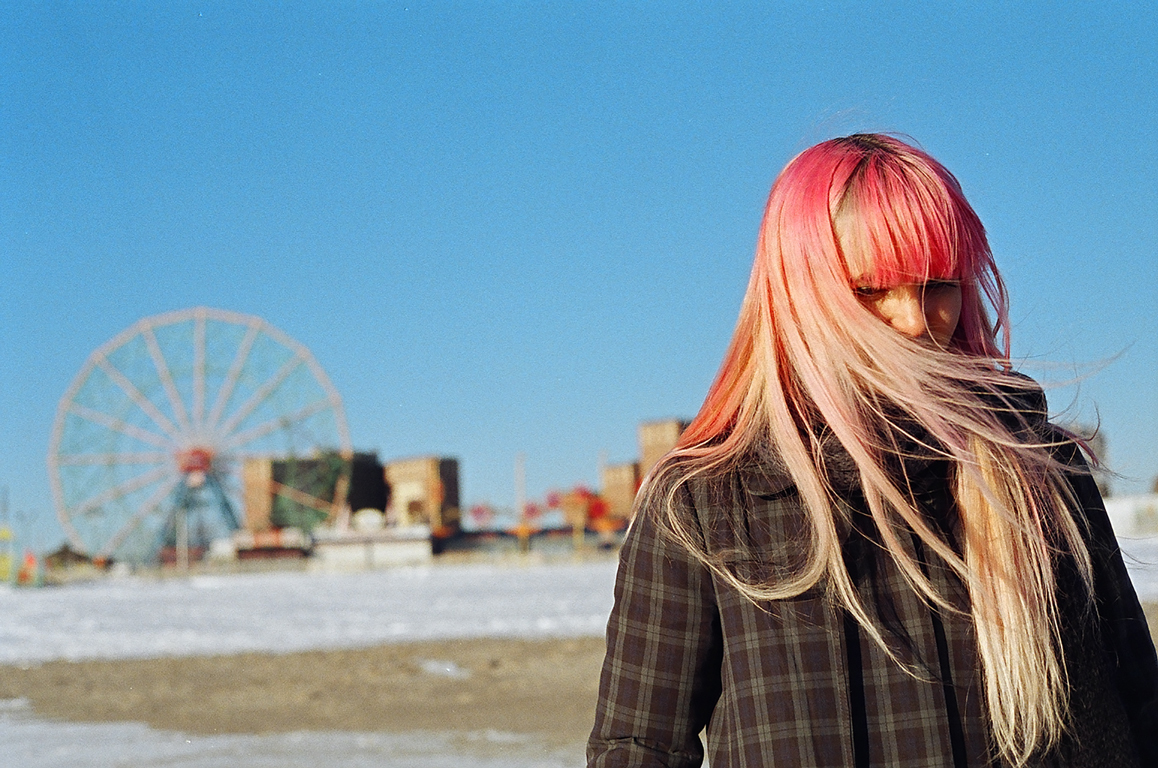I was a teenage girl recently, and no fictional film has captured that experience as well as Marielle Heller’s 2015 movie The Diary of a Teenage Girl. It’s a patchwork of intimate, mirror-gazing moments and blindingly surreal life experiences adapted from Phoebe Gloeckner’s semi-autobiographical graphic novel (of the same name) about coming of age in 70s San Francisco. And it’s totally unique in the way it explores and refuses to trivialize girls’ inner lives.
All This Panic, a new documentary by photographers and first-time filmmakers Jenny Gage and Tom Betterton, which premiered at the Tribeca Film Festival this past weekend, enters those same depths of inner life — but with seemingly no filter between its subjects and their audience.
Shot over three and a half years, almost exclusively within a few feet of its characters’ faces — as they talk in their bedrooms and walk arm-in-arm down city streets — the film follows seven girls as they grow up, dream, fight, drink, make out, make plans, and feel out their futures.
The central characters, Dusty and Ginger, lived at the end of Gage and Betterton’s block in Brooklyn. “We’d see them on their way to school. One day they’d have pink hair, the next it would be green,” says Gage. “It made me remember that time in my life. It’s a really important transformation. So many things happen and it goes so quickly.”
Betterton and Gage, who have a daughter of their own, have worked as fashion photographers for years, shooting for magazines including Vanity Fair and Italian Vogue, but they knew they wanted to capture these girls and their friends in motion, and with sound. “We would occasionally take still pictures of [Dusty and Ginger] just to have. But we really wanted to hear their voices. They really needed to participate in telling their stories,” says Gage.
How did you begin to shape three and half years of footage into something cohesive?
Tom: We had between 130 and 140 hours of footage. It was a really interesting process. We brought in a super talented story editor who looked at all the footage with us. We went through and made notes about what we thought was going on with all the characters and boiled it down to their story arc. It was funny because one of the things that we realized was that all of the smaller things that seemed important to the girls, and even to us, at the time started to fall away as their arcs appeared over the three-and-a-half year period. We suddenly had this amazing vantage point.

Did the girls have a similar reaction when they watched the finished film?
Jenny: We didn’t really show them any footage until we had a rough cut. They really had no idea. So we were all really nervous. But they unanimously loved the film and have been completely supportive. As Tom says, one funny thing is that a lot of the moments they thought would be in the film weren’t. You would think it would be the first time you got drunk or whatever. And actually we were much more interested in those in-between moments and what was going on in their interior worlds.
Were you ever aware that the girls were performing ideas about being a teenager rather than being themselves?
Tom: There were times when you could tell they had been thinking, “Oh, I have this great story,” and they’d rehearsed it and brought it out as a performance. We would let it happen but try and steer away from it. We tried to wear them down and get them to a place where they no longer had the stamina to perform and were just themselves.
Before watching the film, I would have assumed that the girls would be somehow tougher because they’re growing up in New York City, but that doesn’t come across at all.
Jenny: I thought that they’d be harder as well. But I realized there are so many things about growing up that are universal. It doesn’t matter where you grow up. I always said that making this film was my love letter to teenage girls. I felt that that time in a girl’s life is so special and often overlooked. I’m so happy that they have this diary of their time in their life.
You witnessed some really difficult moments in some of the girls’ lives. Did you ever intervene when things went badly?
Jenny: It was hard with Lena and Ginger especially. Lena was losing her home and both her parents have battled really hard. And occasionally we did reach out to help them. And then Ginger for sure [who chooses to pursue acting after graduating from high school]. As an older woman, you look at her and her life, and you know it’s going to be ok; it’s really hard but you figure out who you are, move on with the good stuff, and leave some of the bad stuff. The girls are all really inspirational, and I really feel like they’ll all end up in great places.
What feels unique about growing up in 2016, compared to your own teenage years?
Tom: It really is the same process, but it’s as if the volume’s turned up louder. Everything is more intense for them. Instead of hanging out with a few friends and looking at yourself in a mirror and not being sure if you like what you see, you have social media, and you’re looking at yourself on Instagram and Snapchat.

Tom, as someone who was never a teenage girl, what surprised you most during filming?
Tom: For one thing, how open they were. How brave and secure they were. Without talking to each other, they all individually told us that they were willing to do anything except talk negatively about each other. They directed that part of the movie. There was no way we were going to be able to direct a movie in which they fought and tore each other down.
What was it like for you to witness their private conversations in such close proximity?
Tom: We decided to shoot in an extremely, extremely intimate style. There were no zoom lenses so if we wanted a closeup we had to be eight inches away from their faces. That was really intentional. As a man, I was definitely the only one in the room blushing at certain points, that’s for sure.
From the beginning, I was also extremely concentrated on giving the camera a living point of view within the room. I consciously never shot pickup scenes or b-roll over the three and a half years. And because we couldn’t rely on any of that stuff, we really had to stay on the girls the entire time. That way you are just part of their world. I’d never seen a movie done like that and I was nervous that we’d finish after three years and not be able to put it together.
What’s changed for the girls since you stopped filming in July?
Jenny: Lena and Olivia, who were at college by the time we’d finished filming, they’re still there. Olivia’s still with her girlfriend. Lena is actually with the boy that you see with in her last scene at college. Ginger is still with her girlfriend. And Delia and Dusty still don’t have boyfriends! Ivy and Gabe broke up but she’s living in the Lower East Side and working. And Ginger, at Q&As for the film, always tells people that she now has a job! Her dad is very happy.
Credits
Text Alice Newell-Hanson
Still from All This Panic courtesy Tribeca Film Festival
